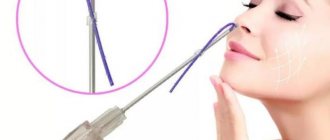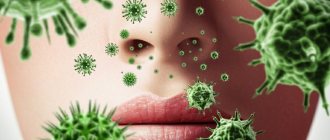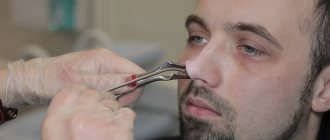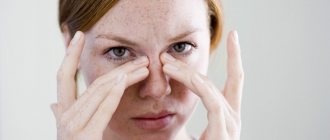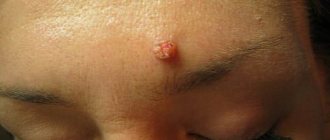When a “cold” appears on the lips, it is always unpleasant. But similar rashes in the nose are many times more unpleasant. And not only because this is a very unsightly phenomenon from an aesthetic point of view (swelling in the area of the nasolabial triangle, swelling, ulceration), but also because it causes a lot of practical inconvenience, for example, the inability to painlessly clear the nose with a runny nose, and about itching and the desire to comb the area of the rash goes without saying. Of course, all this significantly worsens the quality of life, affecting not only the patient’s personal life, but also his ability to work. What are the reasons for the appearance of herpes in the nasal cavity? How to treat these rashes? How quickly can you get rid of the “sore”? How to prevent the appearance of herpetic sores? What medications should be used for such manifestations of the virus? We will try to cover these and other questions in this article.
- How does infection occur?
- Causes of manifestation and exacerbation
- Symptoms and signs
- Treatment of HSV in the nose: In children
- In pregnant women
- In adults
There are two known types of herpes simplex virus - type 1 (HSV-1) and type 2 (HSV-2). Both types are extremely contagious. Thus, according to the World Health Organization (WHO), in 2015, more than 3.7 billion people under the age of 50, or 67% of the world’s population, were infected with herpes simplex virus type 1 (HSV-1). Previously, type 1 virus was called orofacial, because it was believed that it was it that caused manifestations of the disease on the face, and type 2 virus was genital. At the moment, this classification is no longer relevant, since it has been proven that both of these viruses can cause rashes, both on the face and genitals. Both types are unable to survive for long outside the host's body. However, microorganisms often remain active on surfaces and household items throughout the day.
How does infection occur?
Most often, infection occurs through close contact with a carrier (hugs, kisses, etc.). At the same time, the carrier himself may not realize that he is a carrier of the infection, since manifestations of the virus (bubble rashes on the mucous membranes) occur when the immune system is weakened, caused, for example, by attacks by ARVI or influenza viruses. A healthy person can become infected with this infection not only through direct contact, but also when using someone else’s personal hygiene items (towel, lipstick, cream, etc.) or utensils that the carrier had recently used. The mechanism of virus penetration into the body is as follows: HSV does not remain on the surface, on the skin or mucous membranes, but is embedded in the DNA of nerve cells, thus remaining “invisible” to the human immune system. That is why there is no medicine that can “stop herpes forever.” This infection becomes noticeable when a person’s general immunity decreases, when the virus goes beyond the nerve cells and begins to multiply. This explains the exacerbation of the disease. It is at this point that the use of antiviral drugs, both local and systemic, is justified.
During the period of virus reproduction, the carrier becomes the most dangerous to others. But this does not mean that any direct contact with an infected person leads to infection of another person. For herpes to enter the body, the following conditions are necessary:
- Damaged skin: with wounds, scratches, cracks, allergic manifestations;
- Contact of mucous membranes with the carrier (kiss);
- Decreased immune defense.
What causes redness around the nose?
Your skin is the largest organ in the body and is designed to protect you from the environment. However, as your body's first line of defense, your skin takes a beating, and sometimes it shows. Redness around the nose is often a sign that your skin is deteriorating.
Redness around the nose is more likely to develop in winter, when your skin is dry and slightly cracked.
Other causes of redness include the following:
- Rosacea is a chronic skin condition that causes redness. Rosacea, unfortunately, has no cure. However, there are certain methods and medications that can reduce the redness caused by rosacea.
- Pimples (acne) - can cause the skin around your nose to become red and inflamed, especially if you keep picking at it. It's best to apply an acne treatment and leave the pimple alone.
- Perioral dermatitis is a type of rash that forms around the mouth and nose, often as a side effect of topical steroid creams.
- Skin allergies – If you are allergic to things like artificial fragrances or certain skin care products, redness around your nose could be a sign of an allergic reaction.
- Temperature changes - going from cold to hot weather outdoors can cause your skin to flush. Redness around the nose can also be caused by windburn.
- Skin irritation - sometimes the skin around your nose will become red if you rub or scratch it - this can also happen when you have a cold and are blowing your nose frequently.
Apart from these reasons, redness around the nose can also be the result of broken capillaries. Capillaries are very small blood vessels that can be affected by a number of factors, including temperature changes, hormones, sun exposure and even alcohol consumption. If you're still unsure what's causing the redness around your nose, talk to your doctor or dermatologist so they can examine and diagnose the redness.
Herpes on the nose: causes of manifestation and exacerbation
As with herpes on the lips, manifestations in the nasal area are caused by viruses of types 1 and 2. The infection may go unnoticed and appear weeks or even months later.
Typically, an exacerbation of infection is provoked by the following circumstances:
- overheating (on the beach in summer) or hypothermia;
- viral or bacterial diseases;
- unbalanced diet;
- stress, destructive situations;
- alcohol abuse, smoking;
- lack of vitamins;
- exacerbation of chronic diseases;
- long course of antibiotics;
- Women may experience infection during menstruation.
Herpes on the nose: symptoms and signs
It must be said that the rashes are not typical. Herpes in the nose manifests itself differently than, say, on the lips. During an exacerbation, a conglomerate rash usually appears in this zone, which has a thicker “crusty” outer layer. It is formed by epithelial cells. Outwardly, such a rash resembles abscesses rather than blisters that appear with a herpes rash on the lips.
On the wings of the nose, white (sometimes light pink or yellowish) bubbles up to 5 mm in diameter can form.
Note that if herpes first appeared in the nasal area (in the nasal cavity or on the tip of the nose), then in case of relapses, the infection will most likely appear there.
Typically, symptoms of the disease appear inside the nose. There appears redness, itching, slight hyperemia, against which small blisters appear. There can be more than a dozen of them in one conglomerate. They are located close to each other. At first they are filled with a clear liquid, which after a while becomes dark. If the formations are not touched (do not scratch, do not open), then after a while they will dry out on their own and disappear under a gray-yellowish crust. This “sore” will disappear on its own in a few days. A stain will remain in its place, which will acquire a natural shade over time. This process can take from one to several weeks, since the disappearance of rashes in one place does not guarantee that they will not appear in another.
If you accidentally damage the bubbles, the process may take longer. In addition, an inflammatory process may begin on the damaged surface, which in turn is fraught with erosion of the mucous membrane and ulceration. These processes may be accompanied by severe itching, burning and pain. In this case, there is a danger of a secondary, often bacterial, infection. Accordingly, this aggravates the patient’s situation and requires additional treatment.
Fight against peeling
In an attempt to hide traces of peeling, many scrape off the scales, thereby injuring the young skin underneath. The correct option would be: thoroughly steam the skin and clean it with a scrub, then apply a mask with a high fat content, and only then can you remove the soaked scales.
When contacting a dermatologist, you will need to study hormonal levels and blood tests, after which you will need to strictly adhere to a hypoallergenic diet, use a vitamin-mineral complex, Laennec therapy, antibacterial and antimicrobial drugs, and in difficult cases, you will need to use hormonal ointments.
How to treat a nose infection?
Like any other disease, herpes requires consultation with a specialist. If rashes often appear on the wings of the nose, under the nose or inside, you should contact an immunologist.
Traditionally, there are two approaches to treating rashes. The first approach is to prescribe acyclovirii or its derivatives. This group of drugs has its pros and cons. Before use, you must carefully study the instructionsiii, since there are a sufficient number of contraindications and side effects on the body. For example, it is prescribed to pregnant or lactating women with close supervision by a doctor. There are restrictions for use in patients with health problems (for example, kidney or liver failure).
Over time, resistance to these drugs may develop (that is, the herpes adapts or does not respond to this drug at all). The principle of action of acyclovir is the destruction of the DNA of the virus and its ability to reproduce.
The second approach is control over relapses, that is, the use of drugs that can have both an antiviral effect and support the immune system, keeping herpes in a “dormant” state. Various immunomodulatory or antiviral drugs can be used to carry out therapy. One of these drugs is the drug VIFERON. It simultaneously has antiviral and immunomodulatory effects. It is also important to know that this drug is recommended by the standards (protocols) of medical care for the treatment of herpes infection.
How to treat herpes in a child's nose
It is worth remembering that when choosing a drug to relieve symptoms such as herpes on the nose, you should consult a doctor, since many antiviral drugs, especially those based on acyclovir, have contraindications for children under 12 years of age. With frequent relapses of the disease in a child, doctors prescribe complex treatment, always with courses of antiviral drugs. For example, the drug VIFERON can be used in suppositories, which is approved for children from the first days of life. VIFERON in the form of rectal suppositories should be administered to the child into the rectum (that is, rectally). According to the instructions, the treatment regimen is as follows: for 5 days, a suppository in a dosage of 150,000 IU is administered once every 12 hours.
For premature newborns with a gestational age of less than 34 weeks, it is recommended to use the drug VIFERON suppository 150,000 IU daily, 1 suppository 3 times a day after 8 hours.
Treatment of herpes in pregnant women
During pregnancy, it is more difficult to cure herpes on the nose, since many anti-inflammatory and antiviral drugs are prohibited due to the possibility of unwanted side effects during pregnancy and effects on the fetus. Therefore, before using any product, you should consult a doctor. Most often during pregnancy, she prescribes local antiviral ointments or gels.
Viferon Gel
For example, VIFERON gel. It is better to start therapy at the first signs (itching and burning). Squeeze out a strip of gel no more than 0.5 cm long, apply it with a cotton swab or cotton swab onto the previously dried affected surface, apply 3-5 times a day. Treatment lasts 5-6 days and can be continued until clinical manifestations disappear. Treatment can and should be started even if the rash has already begun. For rashes on the nasal mucosa, the gel is applied after cleansing the nasal passages.
Viferon Candles
If herpes manifests itself frequently, then systemic treatment using VIFERON rectal suppositories is recommended. Their use, according to the instructions, is possible from the second trimester of pregnancy (starting from the 14th week of gestation). Course: VIFERON 500,000 IU, 1 suppository 2 times a day. after 12 hours every day for 10 days, then 1 suppository 2 times a day. after 12 hours every fourth day for 10 days. Then every 4 weeks until delivery - 150,000 IU, 1 suppository 2 times a day. every 12 hours every day for 5 days. If necessary, it is indicated before delivery (from the 38th week of gestation) 500,000 IU, 1 suppository 2 times a day. every 12 hours every day for 10 days.
Thus, the inclusion of the drug VIFERON Rectal Suppositories in the complex therapy of pregnant women with HSV-1 HSV-2 helps reduce the duration of the disease from 10.2 to 6.8 days; reducing the number of pregnancy complications (threat of miscarriage from 62% to 31.9%; polyhydramnios from 30.3% to 10%; oligohydramnios from 28.4% to 9% and preeclampsia from 40% to 16.7%), reducing the frequency of relapses of concomitant bacterial vaginosis by more than 1.5 times (mycoplasma and ureaplasma) vi.
Herpes on the nose: treatment in adults
If the frequency of manifestations of the disease in an adult is high, then doctors will recommend complex treatment for such a patient, including immunomodulatory drugs, including, as mentioned above, the drug VIFERON. It is worth noting that the form of delivery of the active substance to the body (rectal suppositories) does not create additional stress on the stomach and liver, which is important for patients who are already taking other drugs to treat concomitant diseases. This is especially true for older people.
The recommended dose for adults is 1,000,000 IU, 1 suppository 2 times a day every 12 hours every day for 10 days or more for recurrent infections. According to clinical indications, therapy can be continued. It is better to start treatment immediately when the first signs of damage to the skin and mucous membranes appear (itching, burning, redness). For recurrent infections, it is advisable to begin treatment in the prodromal period.
The article “New aspects in the treatment of herpes simplex” vii noted that during therapy with the drug VIFERON, there was a rapid relief of clinical manifestations of exacerbation of the disease. The time for regression of rashes decreased on average by 5–7 days. As a result of clinical observation of patients for 1 year after the end of therapy, it was noted that VIFERON, with long-term use, also has a preventive effect. A 3–4-fold reduction in the relapse rate was recorded in 69% of patients.
If signs of infection appear, treatment with suppositories can be accompanied by the use of VIFERON gel, which alleviates the symptoms and improves the quality of life.
How to Avoid Worsening Skin Redness
When treating the underlying cause of your redness, there are irritants that you should avoid to avoid making the situation worse. For example, you may want to avoid wearing makeup for a few days to give your skin time to recover—you may also want to avoid direct sunlight and extreme temperatures.
Here are some other irritants you should avoid to help reduce redness around the nose:
- Alcohol, caffeine and spicy foods, which make blood vessels more visible
- Some skin care ingredients, such as alcohol
- Artificial fragrances and other additives that may irritate the skin
- Rough fabrics or fabrics that can damage or irritate the skin
If you want to reduce redness, it's important to give your skin time to recover and keep it hydrated. If you need a little extra help there are a number of skin care products you can try.


